Designer Sintra Martin contains multitudes. “I always had the feeling of living between two worlds,” she confides over Zoom, days before her AW22 show. She’s referring to her childhood — born to a Portuguese father and an American mother, she grew up in Los Angeles, dreaming of Lisbon — however, the sentiment also serves to illuminate the New York designer’s multifaceted inner world. “Growing up, I always felt I was outside of the gender spectrum. I never really identified with either femininity or masculinity. I didn’t like that I felt like I needed to prescribe an identity,” she explained. Sintra’s designs evoke the same expansiveness, exploring spectrums, breathing life into the space beyond the binary. With her label Saint Sintra, the designer explodes, amplifies, distorts and conflates the trappings of mens and womenswear: a joyous, “gender-bending” alchemy.
After graduating high school in Santa Monica, Sintra moved to New York City to attend The New School. There, she dabbled in a multitude of topics (sociology, anthropology, literature, music) and took on a multitude of internships (helping Victor Barràgan open up shop and “packing fashion week swag bags” for Milk Studios). “Two years into my degree, I wasn’t feeling fulfilled. I wasn’t able to apply the things I was learning,” she says. So, Sintra transferred to Parsons where she enrolled in the school’s Fashion Design program. It was something tangible, a means of translating her formative interest in fashion and art into something real.

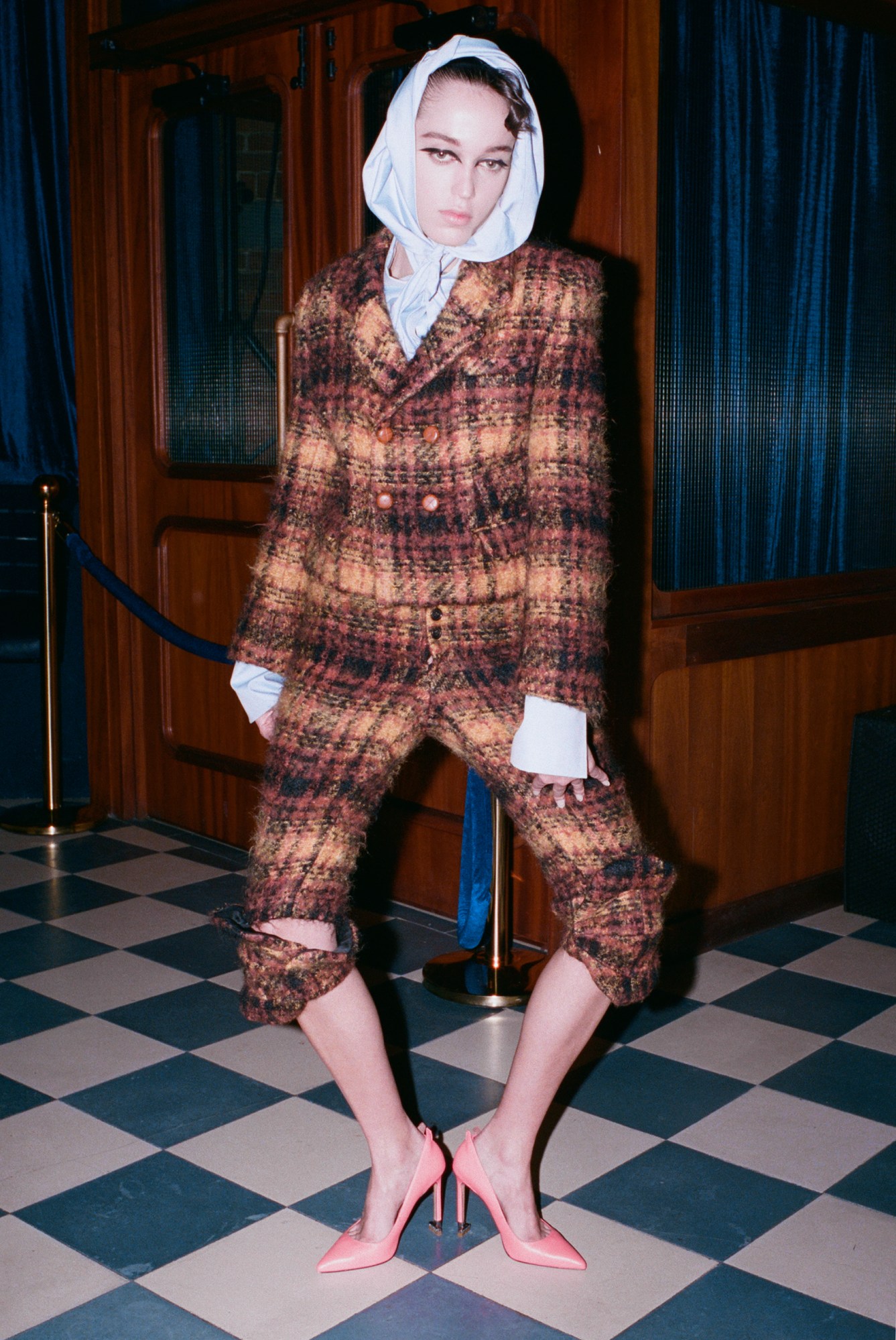
In addition to her full-time studies, Sintra’s stacked scholastic schedule included internships with Thom Browne and at the Fashion Study Collection at Parsons. Both experiences shaped the young designer’s sensibilities into those that would birth Saint Sintra. Working in the Parsons archives, Sintra plumbed the depths of over two centuries of fashion history (“4000 pieces, the oldest from the 1760s all the way through to Comme des Garçons,” she elates). She spoke reverentially to the few garments from Norman Norell and Sophie Gimbel: “It was interesting to see the American version of couture.” (A legacy to which Thom Browne is today’s heir apparent). From Browne, Sintra followed senior designer Jackson Wiederhoeft to his namesake label, where she met stylist and close collaborator Ron Hartleben, and where Saint Sintra would begin to take shape.
In early 2020, however, Sintra’s senior year at Parsons was cut short by Covid-19. The usual end-of-degree celebrations — the graduate showcase, the networking events, the parties — all upended. “We didn’t get to finish anything,” she recalled. “So I decided to finish my graduate collection independently.” She rented an inexpensive studio space in Brooklyn (“a 300 square foot windowless room with no ventilation,” she laughs), and holed up for a year, creating what would become Saint Sintra’s first offering. From that tiny studio, however, word of mouth got out and before she’d even finished the collection, stylists — and celebrities — were knocking. First, it was Slayyyter, who Sintra outfitted in custom gingham for the pop star’s Troubled Waters album cover. Then, Emma Chamberlain (one viral leather miniskirt), Sydney Sweeney (a pink velvet corset) and Miley Cyrus. “The calibre of pulls kept mounting. It was at that point I started planning the next collection. It felt like there was some wind under my wings, so I was able to jump into the unknown territory of starting my own brand more officially,” Sintra explained.

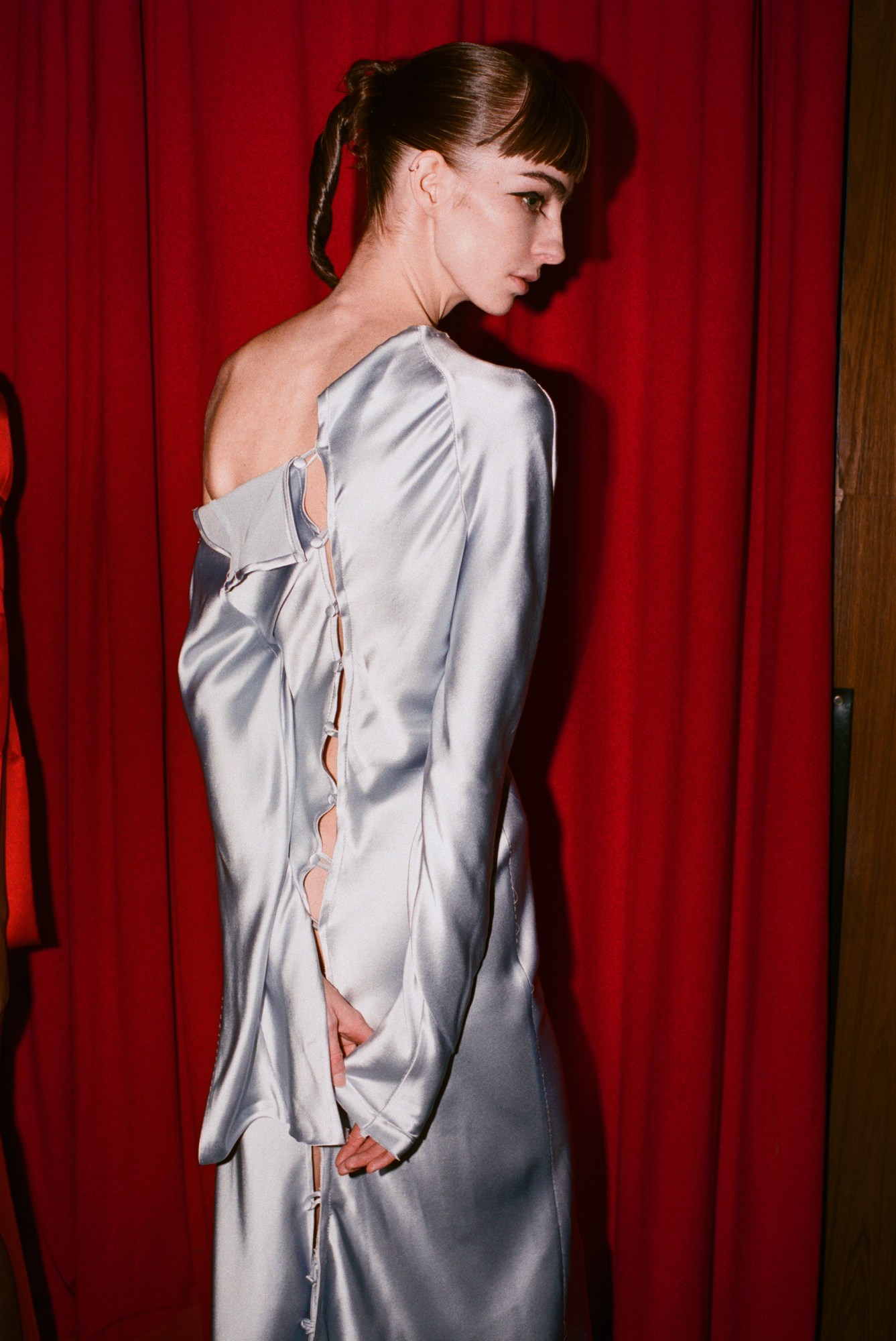
The designer officially launched Saint Sintra — for all intents and ready-to-wear purposes — for SS22, with a max-capacity show at New York Fashion Week: “All of a sudden there was a show and it was a much bigger deal than I thought,” she said. Held at The Stranger nightclub in Hell’s Kitchen, Sintra’s debut show was a bright and bubbly affair: astroturf lined the runway, attendees sat in kitschy lawn chairs, in one corner, an animatronic elephant. Her debut collection was “aggressively feminine in that it was masquerading femininity”. Through it, the designer grappled with her own relationship with womanhood and larger questions like ‘what does it mean to be a woman today?’
“I’m always asking how I fit into this world, what I get to do, and a lot of that is prescribed by gender,” Sintra explains. “I feel like I’m really limited by my gender, in some ways.” As such, her SS22 collection was both a celebration of femininity and a sartorial send-off to the many ways women are put into boxes, minimised and immobilised. Drawing from her love of Old-World couture, the designer explored the corset and the petticoat, two of womenswear’s most historically frivolous and prescriptive garments. From the former, she conjured a larger-than-life display of femininity: a hyper-girlish look, crafted from bubblegum pink taffeta and wreathed in jacquard bows. The petticoats were worn beneath sharply tailored skirt suits that spoke more to a modern-day “garçonne,” in Sintra’s words, than an 18th-century damsel.
By merging and melding the age-old tropes of womens and mens clothing, Sintra hoped to create a new, expansive sartorial language for women. “Gender-bending,” Sintra says, is both the label’s raison d’être and its modus operandi. “One of my goals as a designer is to pave a new way for women to exist in this world.”
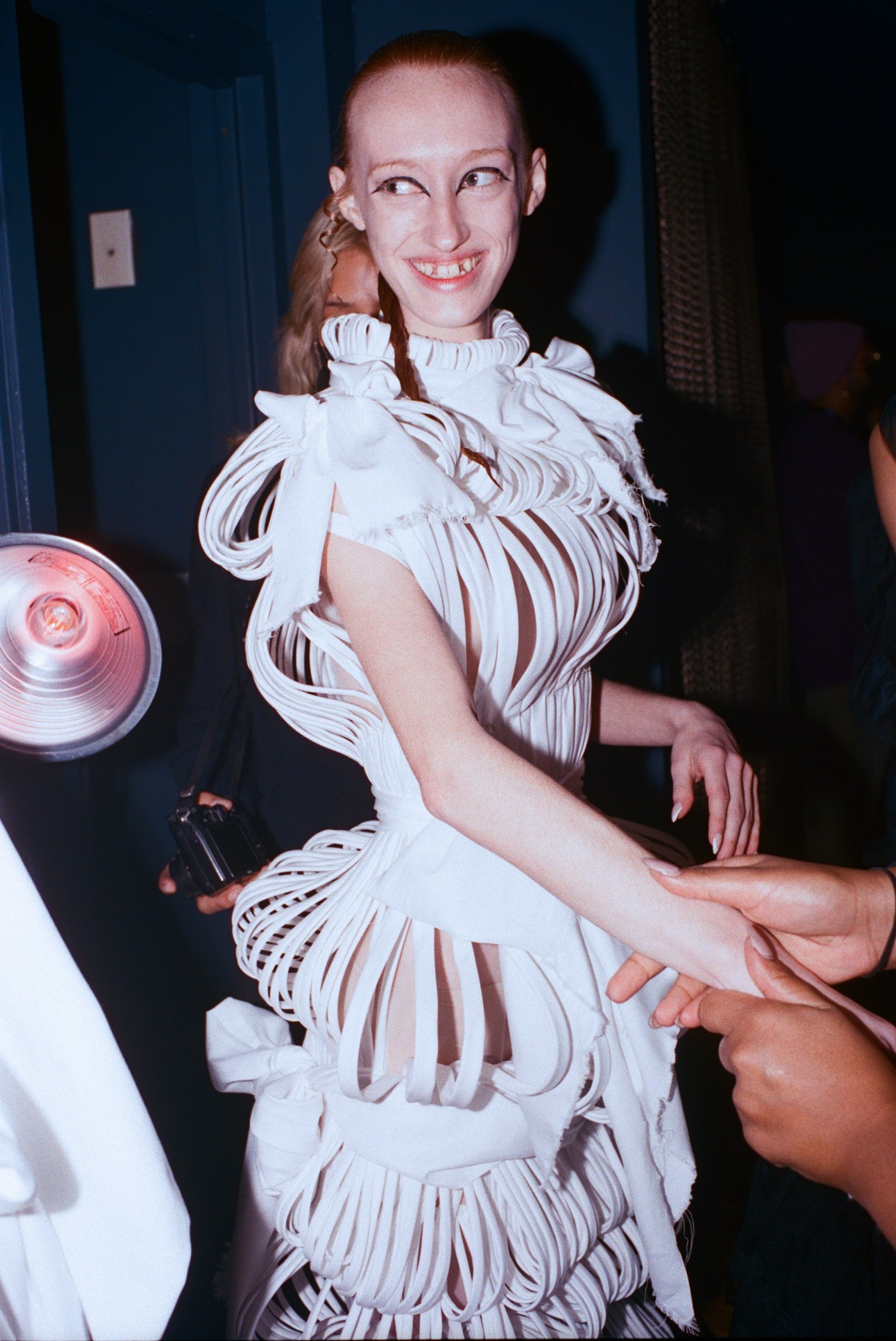
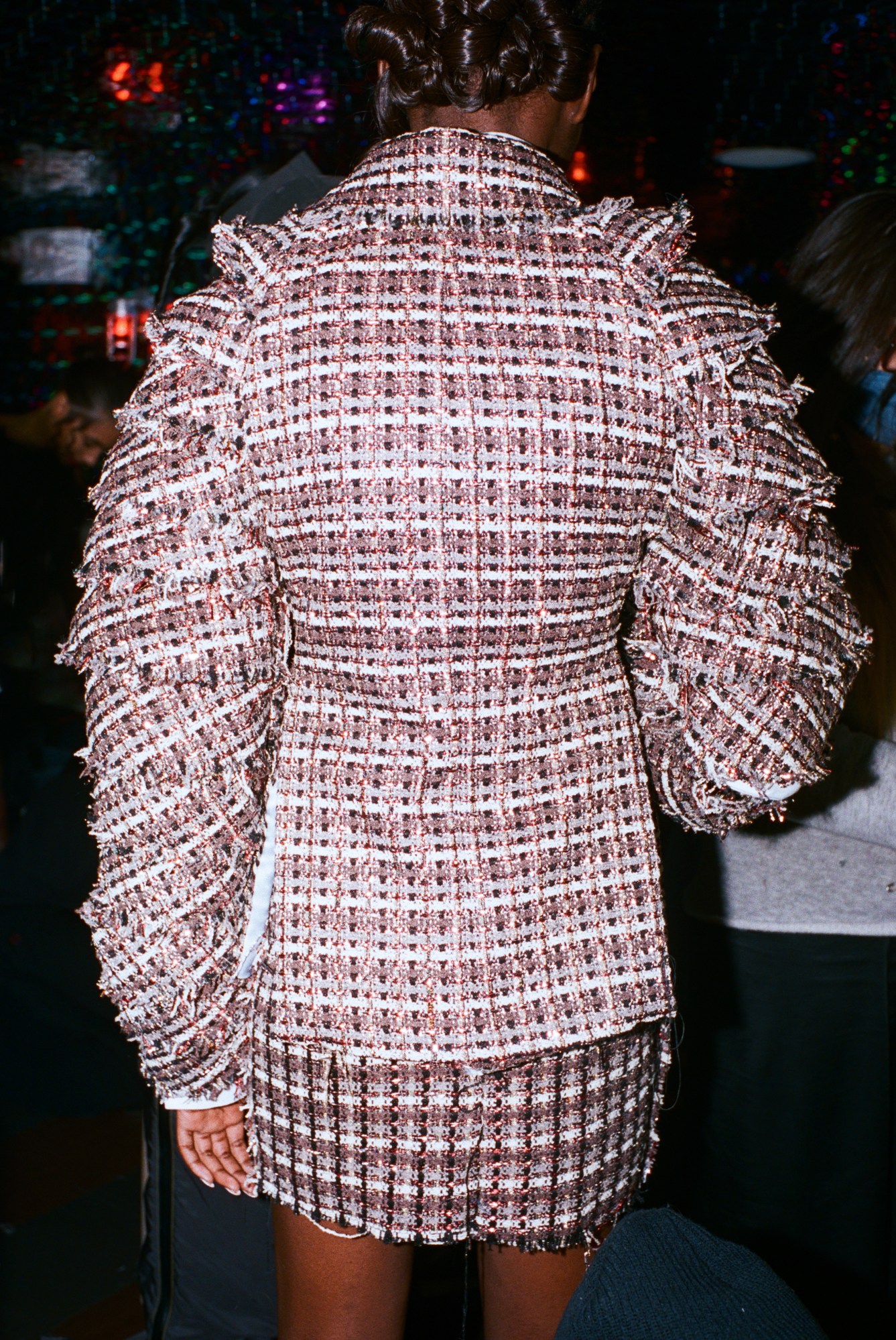
Beyond the gender spectrum, Sintra draws inspiration from a number of dualities and dichotomies. “I’m very old-fashioned,” she says, referring to her love of early-20th century design. She points to the period between the end of Art Nouveau and the beginning of Art Deco as her favourite. “The fashion was so bizarre. It was very clearly in a transitional phase and that area of overlap is so interesting because you get a lot of mixed ideas.” She also points to the absurdism of David Lynch, whose films served as a reference for her latest show, as another touchstone. “The thing that I take away from Lynch is this sensation of discomfort. There’s always something a little off, not super secure. That’s what I’m looking for in a design: is this making me feel comfortable and, if so, how can we change that?”
Sintra’s AW22 collection delves further into this notion of liminality, advancing a more nuanced expression of womanhood. “[With] the last collection, I was projecting what I think it should mean to be a woman. This collection is a bit more honest and less feminine. It’s what I think it means to be a woman,” she explains. This season, Sintra spotlighted shirting, twisting, turning and transforming menswear staples into iterations that are not quite masculine, nor feminine.


A striped Oxford button up is knotted with bows. A gorgeous periwinkle satin gown resembled a shrugged-off shirt: from the back, its neckline twisted into a pointed collar, beneath the shoulder blade, a placket cascaded into a long, buttoned train.
This season, Sintra was also inspired by a recent trip to Florence. “I was really captivated by the armour all over the city. It’s practically mediaeval!” she says. Her armoured womenswear — symbolic of another mode of female existence — took shape through tailoring. A tweed blazer featured fully articulated sleeves, while a camel wool jacket was cut with buttoned panels recalling knightley couters and pauldrons.
In homage to couture traditions, the designer opened her show with black tailoring and closed with a bridal look. Albeit, a bridal look “turned on its head.” During the show’s final act, the bride teetered across The Palace’s Lynchian checkerboard floors wrapped in undulating ribbons of white cotton. A paper doll or an “onion bride,” according to Sintra. “The bride is obviously…” she trails off for a minute. “I mean, I’d love to meet the person who wears this to their wedding!”
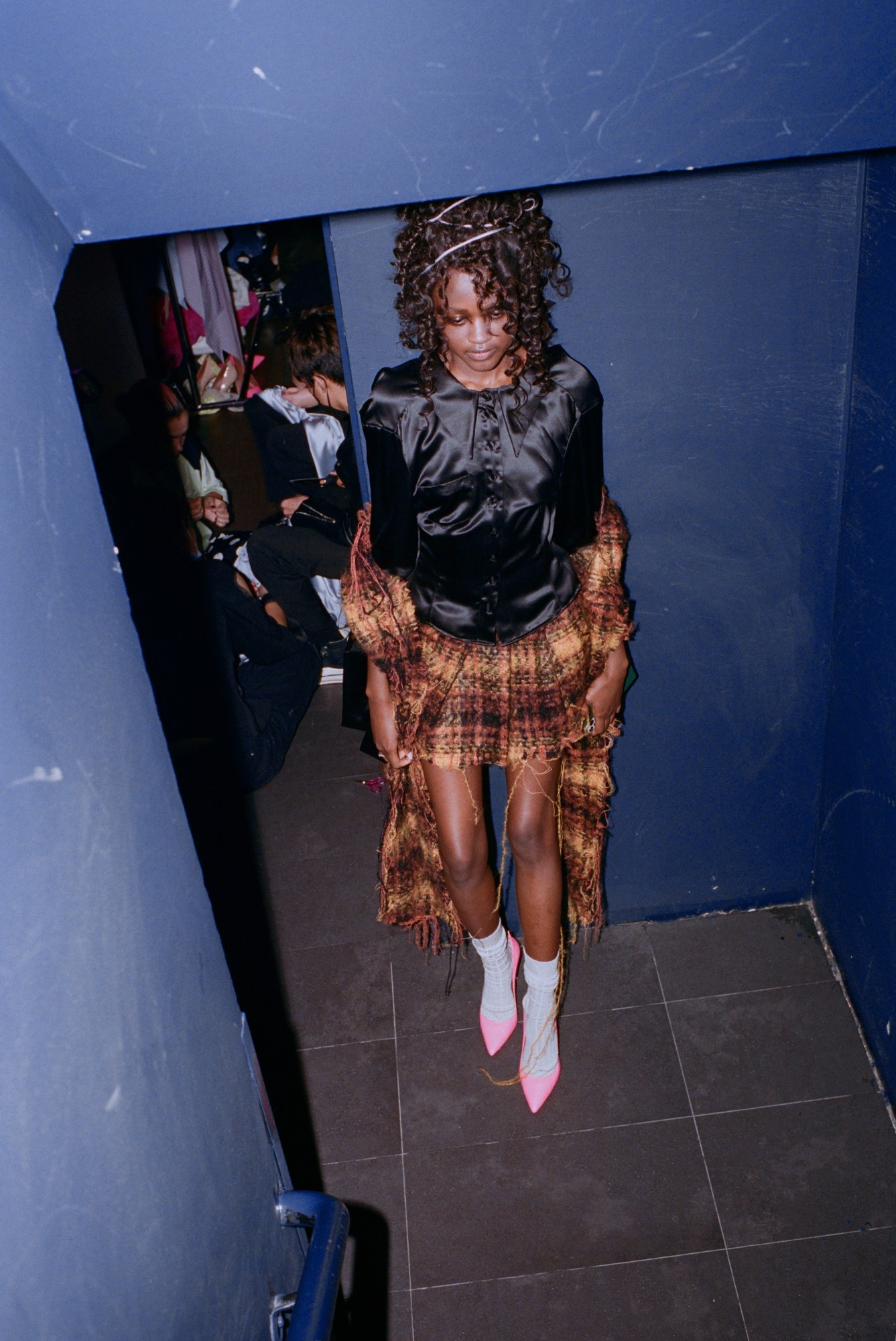
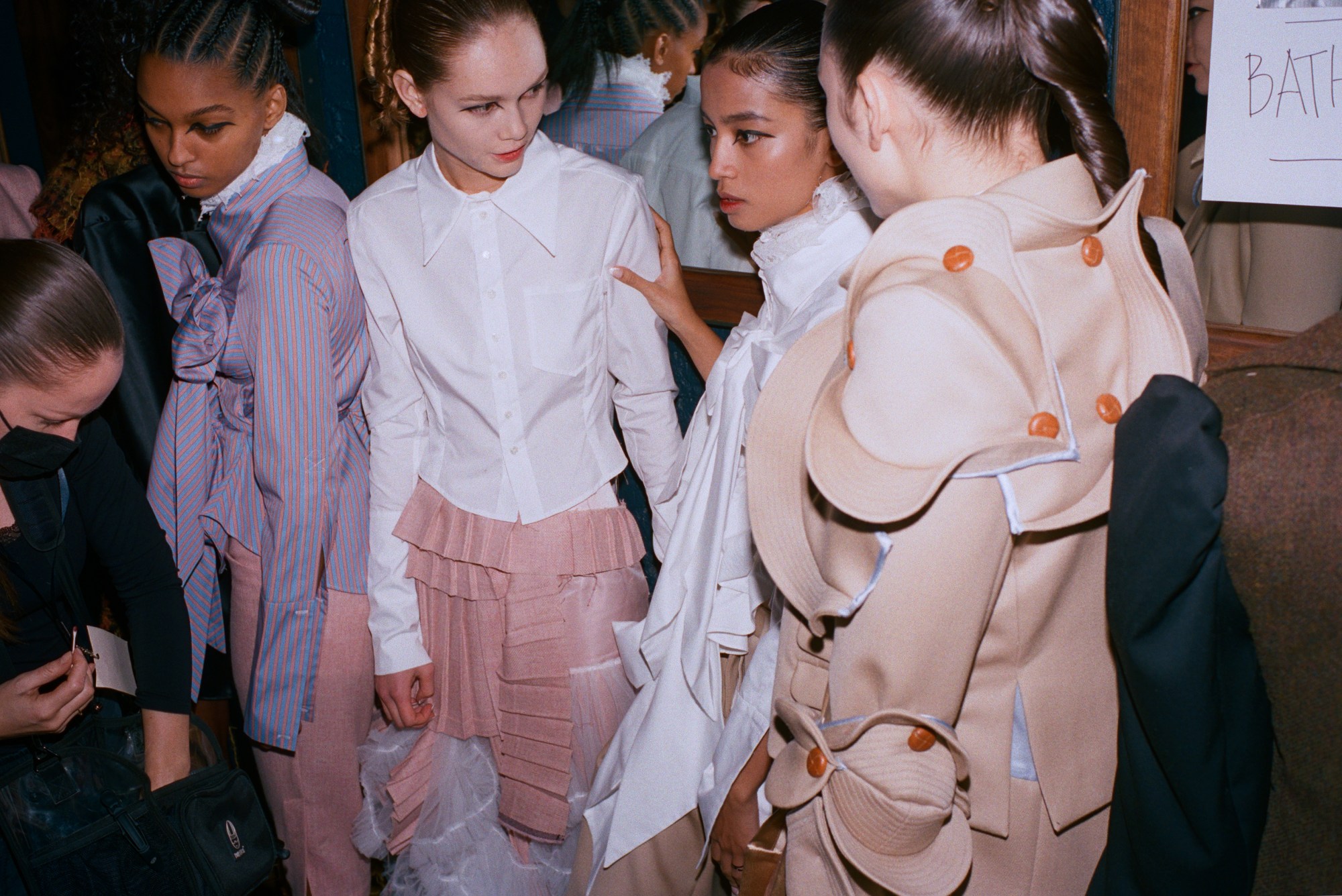
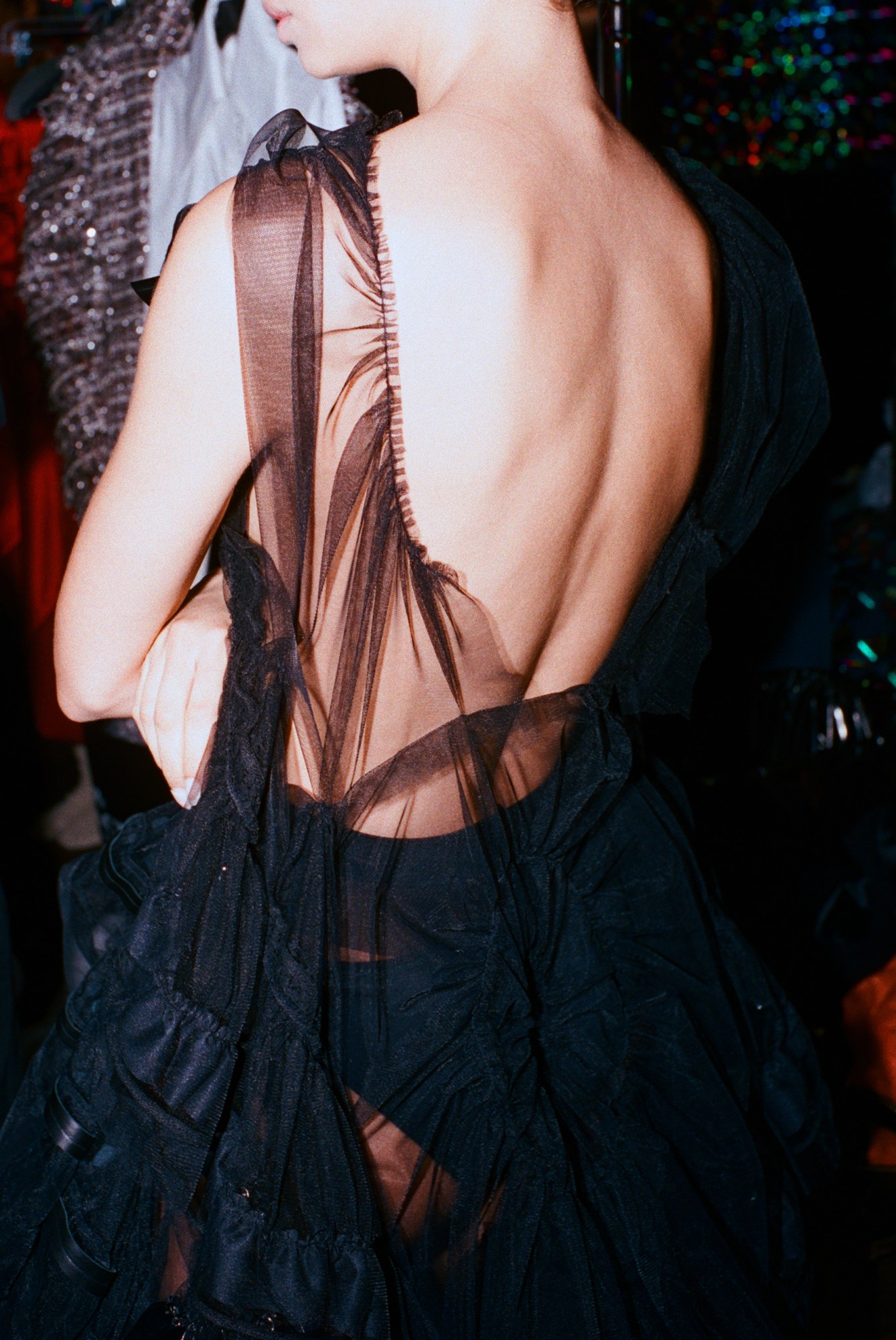
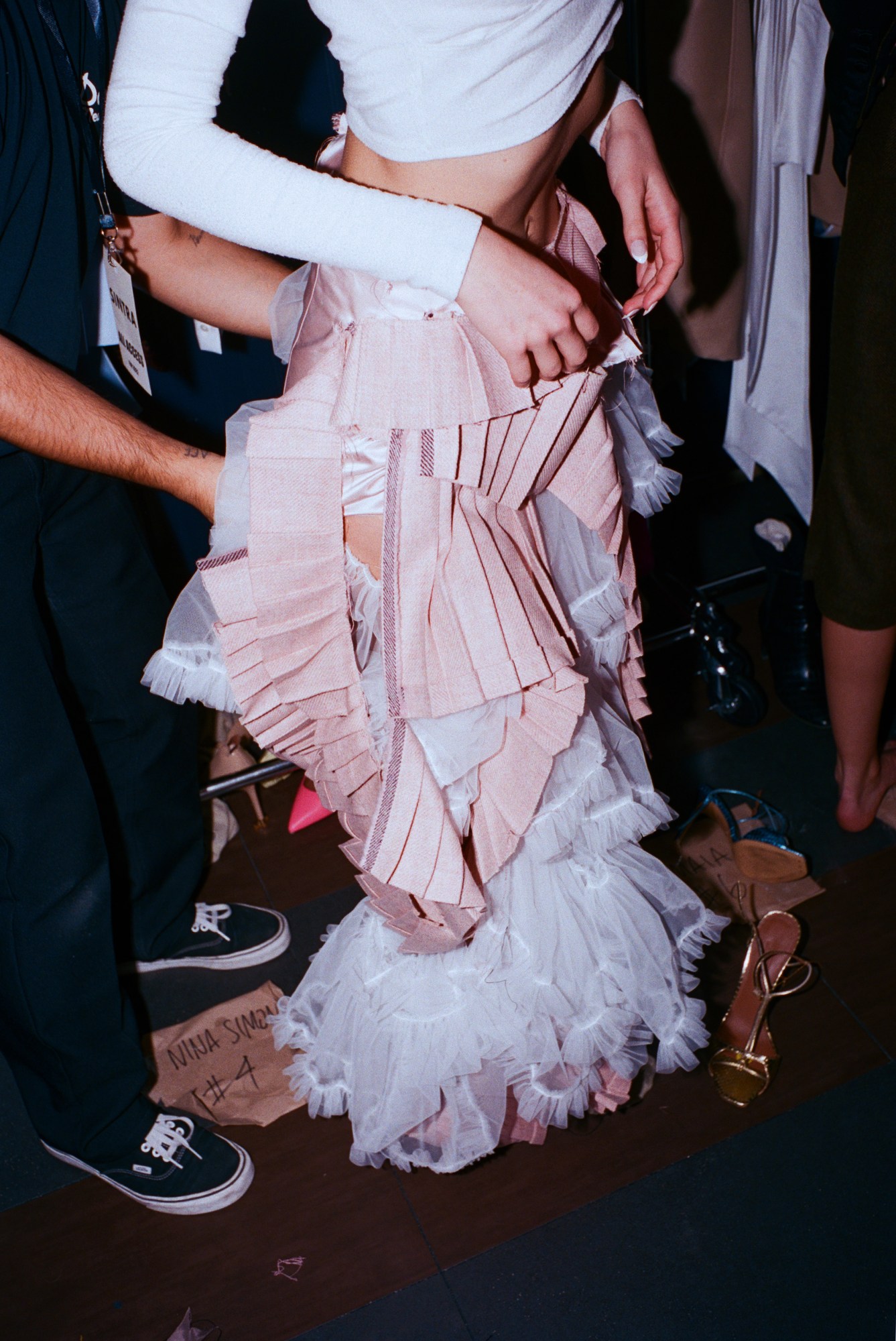

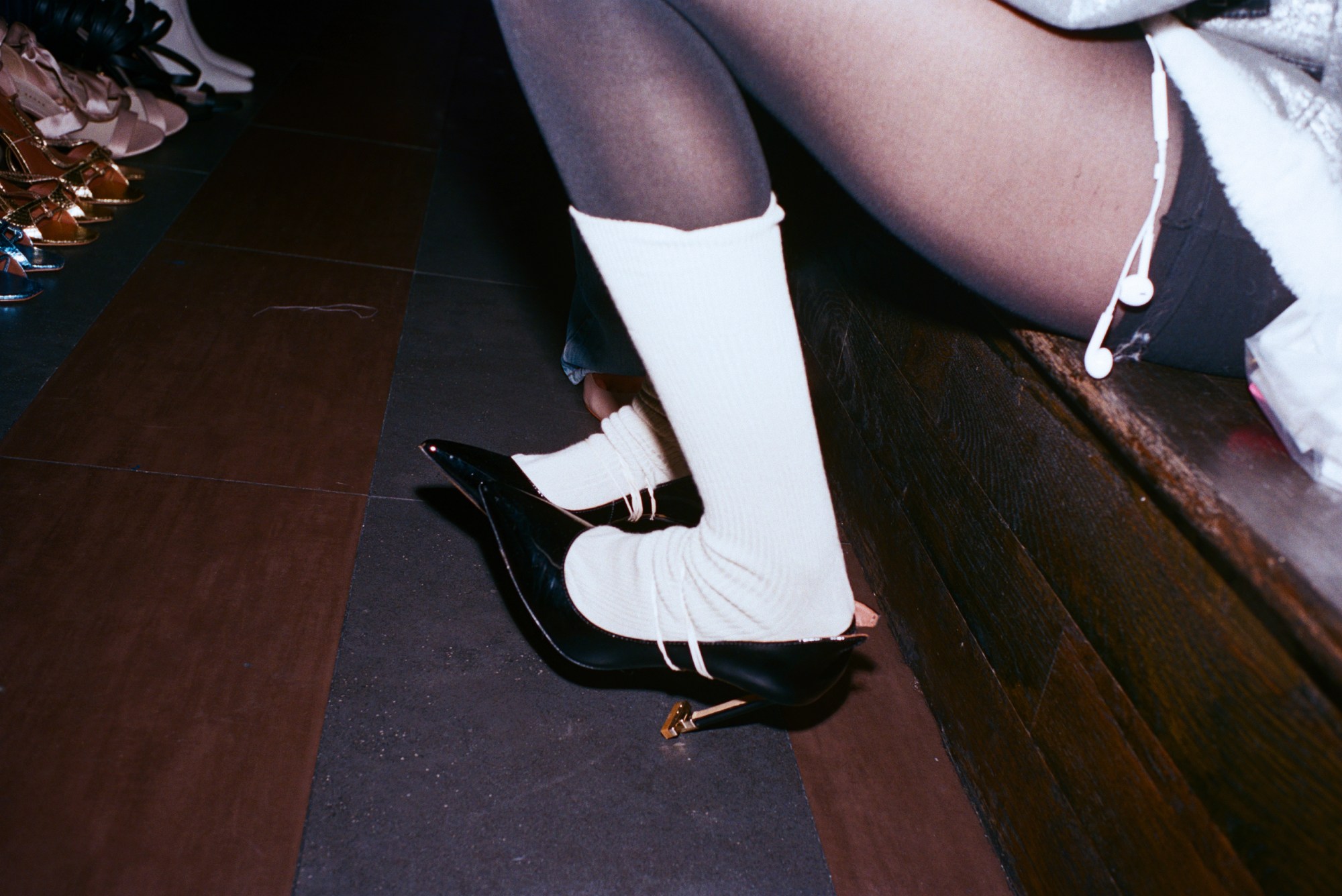
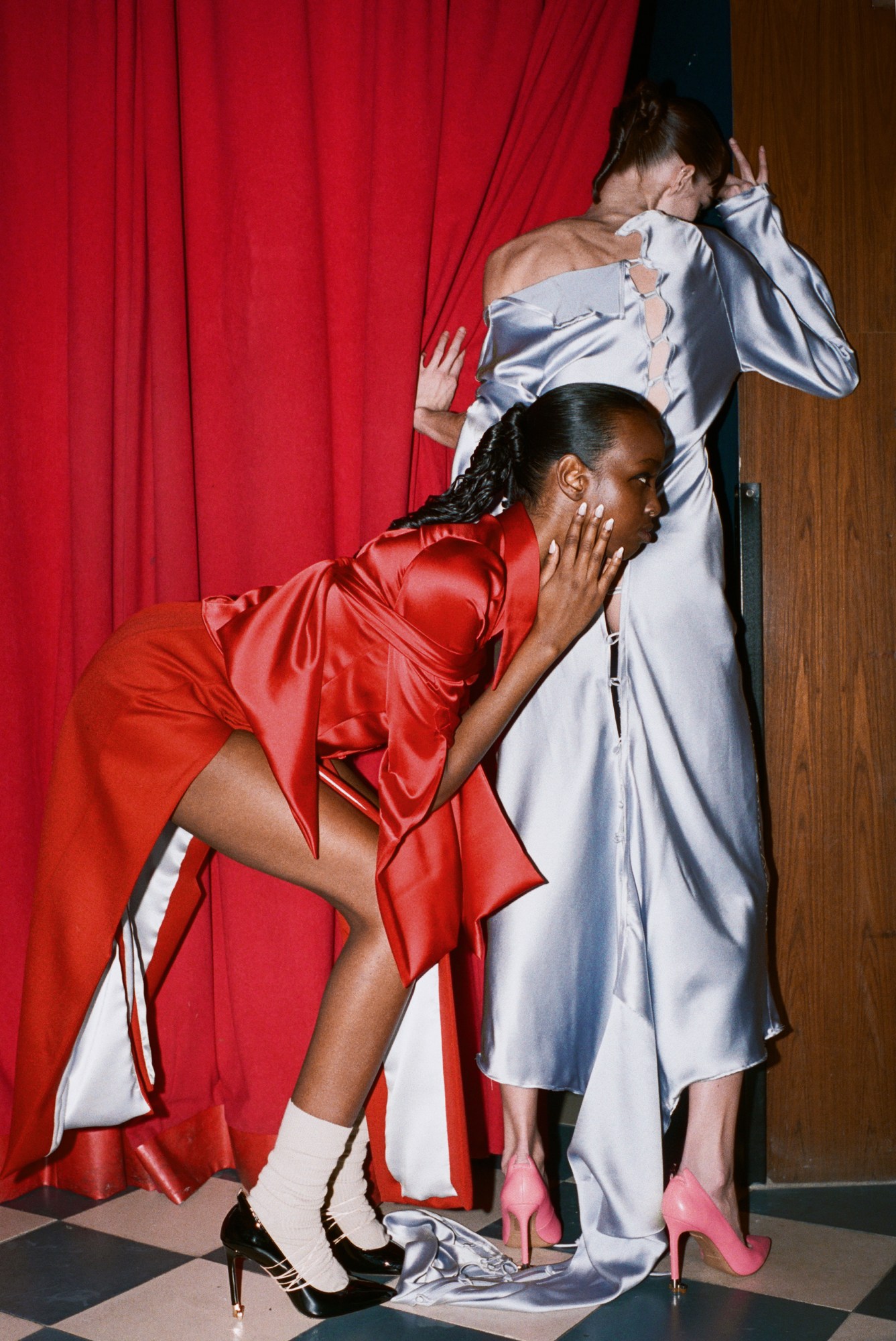
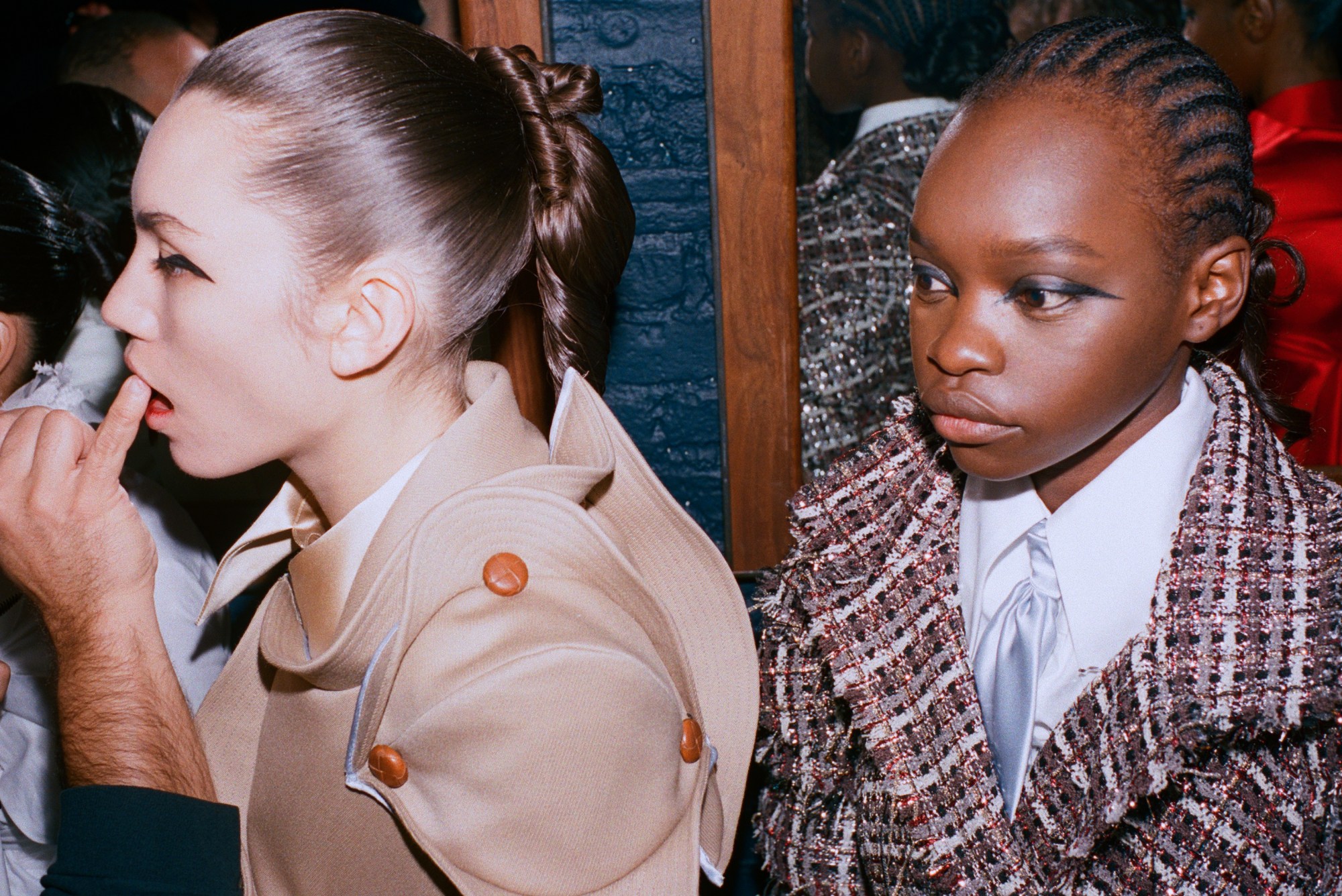
Credits
Photography Hedi Stanton
Follow i-D on Instagram and TikTok for more fashion week coverage.
